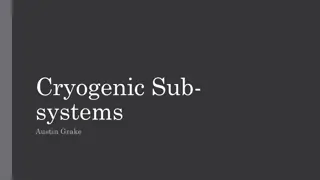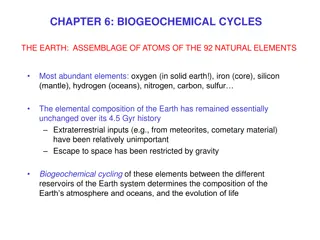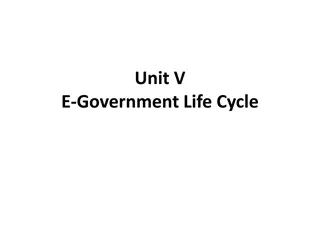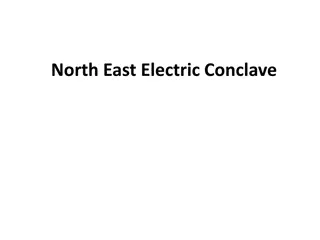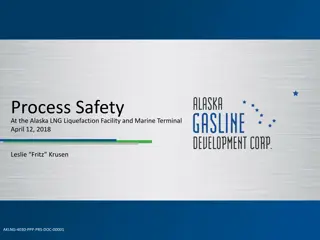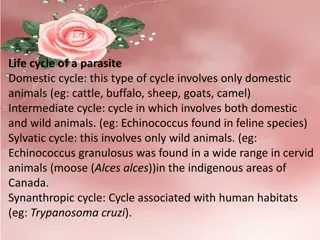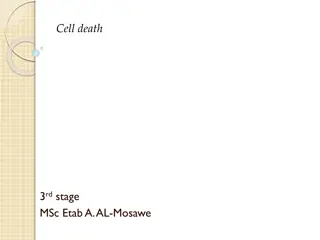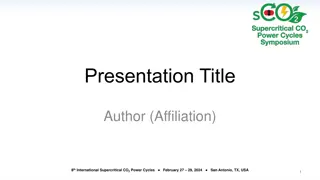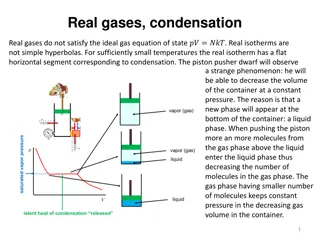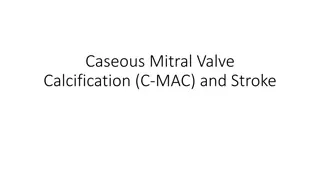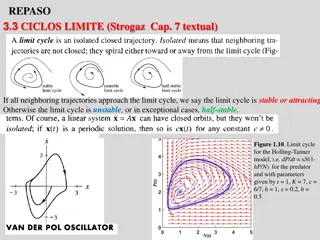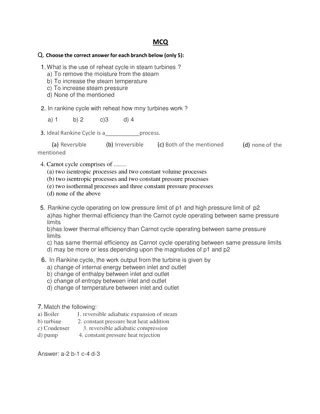
Processes of Air and Hydrogen Liquefaction: Lindes, Claudes, and More
Learn about the intricate processes of liquefying air and hydrogen using methods such as the J-T effect, internal and external work techniques, and specific pressure and temperature conditions. Explore Lindes' and Claudes' approaches, including key steps and considerations for successful liquefaction. Discover the complexities involved in liquefying hydrogen and helium, from precooling requirements to safety measures.
Download Presentation

Please find below an Image/Link to download the presentation.
The content on the website is provided AS IS for your information and personal use only. It may not be sold, licensed, or shared on other websites without obtaining consent from the author. If you encounter any issues during the download, it is possible that the publisher has removed the file from their server.
You are allowed to download the files provided on this website for personal or commercial use, subject to the condition that they are used lawfully. All files are the property of their respective owners.
The content on the website is provided AS IS for your information and personal use only. It may not be sold, licensed, or shared on other websites without obtaining consent from the author.
E N D
Presentation Transcript
LIQUEFACTION CYCLES:
Lindes process of liquefaction of air: This process uses J-T effect. At the inlet air is compressed to 200 atm pressure using a high pressure pump/ compressor B. The heat thus produced is removed by passing hot air through spiral condensing coils immersed in cold water bath. If there are any water vapours present, will be collected at D. Now the compressed air at about 290K passes through copper spiral E and then expands by J-T effect through the jet J . Here the pressure drops to 20 atm and hence temp falls to 200K. The cooled expanded gas moves up through the vessel and it cools the incoming hot gas further down, which on expansion through the jet is further cooled by J-T effect. The process is repeated in a repetitive (regenerative) way until the temp of the gas falls sufficiently and get liquefied and is collected at the bottom of dewar flask(F).
Claudes process of liquefaction of air and hydrogen: Claude s process uses both internal and external work techniques. Air is first compressed to 40 atm pressure by pump P and after removing the heat of compression by passing it through coils immersed in chilled water, it is taken through heat exchanger I , here the hot gas cools to 193 K by the counter flowing cooled expanded gas coming after final J-T expansion. This cooled gas is divided into two streams, a certain fraction M passes through the second heat exchanger. The remaining gas fraction (1-M) passes as a separate stream and enters an expansion engine E, here the gas expands to 1 atm by doing external work against the piston which may be connected to a dynamo and getting cooled there by. The cold gas then passes through heat exchanger II in counter flow direction and cools the I stream ( fraction M) of high pressure gas. The degree of expansion is chosen such that the temperature of heat exchangers II and III are considerably less than the critical temperature of the gas (air) but not as low as normal boiling point. After the heat exchanger II and III , the gas is subjected to J-T expansion through the valve V. After a number of cycles, the temperature of the air falls below its boiling point, gets liquefied and collects at the bottom.
Liquefaction of hydrogen by Claudes process: The same Claude s process can be used for liquefaction of hydrogen. In case of hydrogen, the optimum inlet pressure has been shown to be 150atm - 160 atm at a temperature of around 63K-80 K and expansion to 1 atm. Typical efficiency with Pin = 150 atm and T= 63K is found to be 0.285 . Liquefaction of hydrogen is more complicated than that of air, the gas after compression has to be precooled to as low as 204.6K ( its inversion temperature.) before subjecting to J-T expansion. Also traces of impurities like oxygen has to be taken care of, otherwise, will liquefy before hydrogen and block the narrow tubes of the liquefier. Also hydrogen being highly inflammable proper care has to be taken to prevent any fire explosion.
Helium liquefaction(Kammerlingh Onnes method): Liquefaction of helium is much more complicated than hydrogen, the gas has to be precooled to temperature below its critical temperature( 5.2K). All impurities should be removed by passing through activated charcoal cooled with liquid air. The first successful liquefaction of helium was done by kammerlingh onnes in 1908 by using J-T effect. In the first step helium has to be precooled below its inversion temperature (35K) and then even below its Boyle s temperature (17K) by passing compressed helium through liquid hydrogen boiling at reduced pressure. Helium gas at 36 atm pressure enters the inlet tube. At A, the gas is divided into two parts, the two parts passes through the spirals S1 and S2. the two gas streams are joined again at B and further divided into two at C. Each individual part passes through yet another spirals (S3 and S4 ) in this case again the streams are reunited at D and pass through E where it undergoes J-T expansion to about 1 atm pressure. The entire apparatus is surrounded by Dewar flasks to provide perfect insulation. The spirals S2 and S4 are cooled by liquid hydrogen boiling under reduced pressure while S1 and S3 are cooled by expanded gas coming out of nozzle E after J-T expansion .
The gas after J-T expansion rises up cooling S1 and S3 still further down and reaches compressor. After compression, the gas is once more fed to the inlet port and cycle is repeated. When the temperature of the gas after expansion falls below the boiling point (4.21K), gas gets liquefied and collects at the bottom of the Dewar flask with an efficiency of 0.22.
Liquid Nitrogen (LN2) and Liquid Oxygen (LO2) : We know that major constituent of air is nitrogen (78.01%) and oxygen(20.99%). The remaining portion (1%) contains CO2 , Ar , H2 and Neon. So major portion of LN2 and LO2 are obtained by separating them from liquid air. Remember here that B.P. of air, nitrogen and oxygen are respectively 78.6K, 77.36K and 90.19K. Rectification and separation of LN2 and LO2from liquid Air: Liquefied air is subjected to rectification to separate oxygen and nitrogen present in it. In liquid state both are miscible in all ratios and therefore can not be separated by boiling alone. Rectification is carried out in a plate column which is a tall cylindrical structure inside which repeated condensations and evaporations takes place on plates which leads to a continuous change in composition of binary system throughout the length of the column. This is continued until one of its pure components exists at the top of the column and the other at the bottom of the column.

